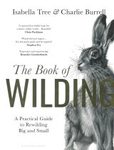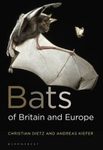![RSPB Spotlight: Hares RSPB Spotlight: Hares]()
Click to have a closer look
About this book
Contents
Customer reviews
Biography
Related titles
About this book
With their wild glare, swift turn of foot and secretive nature, hares are the rabbit's mysterious and untameable cousin. Always a thrilling wildlife spot, the hare has long been a symbol of Britain's sweeping, open countryside. Hares have also been associated with human culture and folklore for many centuries – their associations with spring can be traced back to the druids.
Focussing on our two British species, the Brown Hare (found throughout the UK and widely distributed in Europe and Asia) and its more northerly relative the Mountain Hare (found in Scotland, Ireland, Scandinavia and the Russian Federation), RSPB Spotlight: Hares offers exciting and up-to-date information on these incredible lagomorphs, with chapters covering their biology, evolution, natural history, behaviour, including courtship rituals, and ecology. Information on some of the more charismatic species of hare found elsewhere in the world and on hares' other relatives, the rabbits and pikas, is also provided.
The author discusses in detail Hares' interactions with humans, in agriculture, habitat management, shooting and hunting, as well as in more culinary matters, and reveals why this almost mythical animal of hill and meadow is so sensitive to the changes we make to age-old farming landscapes. The presence and significance of hares in our culture is also discussed, including the Easter hare, Lewis Carroll's mad March hare, and hares as shape-changers. Nancy Jennings also offers useful tips on where and how to see hares for yourself in the wild.
Contents
- Meet the Hares
- Evolution and Adaptations
- Relatives Around the World
- The Lives of Hares
- Breeding Machines
- Growing Up Fast
- Eat or Be Eaten
- Conservation of Hares
- Humans and Hares
- Folklore and Art
- How to See Hares
Glossary
Acknowledgements
Further Reading and Resources
Image Credits
Index
Customer Reviews
Biography
Nancy Jennings is a biologist specialising in mammals. After gaining her PhD from the University of Bristol, Nancy was a commissioning editor of biology titles for Imperial College Press, London. She now works freelance, offering editorial and other support to scientists, including writing and editing scientific papers, scientific project management, and developing Higher Education programmes. She is also the managing editor of the scientific journal Mammal Review.







































![Atlas des Mammifères Sauvages de France, Volume 2: Ongulés et Lagomorphes [Atlas of Wild Mammals of France, Volume 2: Ungulates and Lagomorphs]](http://mediacdn.nhbs.com/jackets/jackets_resizer_medium/25/252352.jpg?height=150&width=107)











